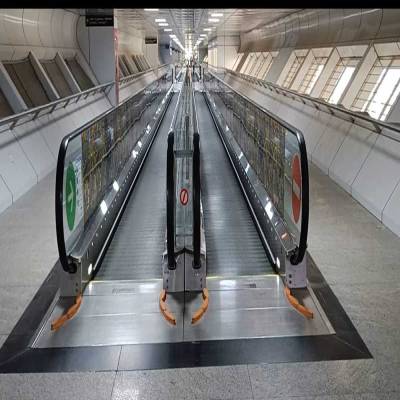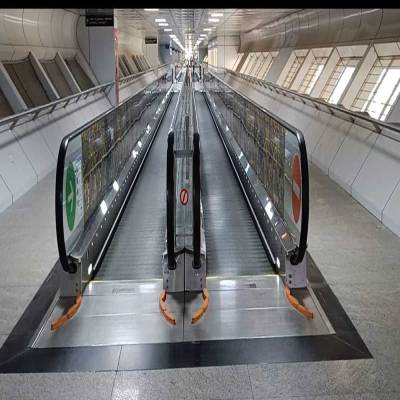- Home
- Real Estate
- Smart building technology contributes to workplace strategy

Smart building technology contributes to workplace strategy
Organisations now understand that smart workspaces can be a powerful tool to support employees to achieve better productivity and performance. 'An office space should be well-equipped to improve efficiency, simplicity, safety and security,' says Shabbir Kanchwala, Senior Vice President, K Raheja Corp, as he elaborates further.
How have the design and green measures adopted by the company in commercial projects helped enhance productivity?
Some new technologies used by the company in green buildings include: The net-zero concept: Net-zero concept buildings depend on renewable sources to produce as much energy as they use and are a great investment to reap long-term benefits.
HVAC: HVAC systems should consist of water-cooled screw chillers with a high coefficient of performance and eco-friendly refrigerant. For better indoor air quality (IAQ), the use of a demand control ventilation system with CO2 sensors is a must. Many are turning to daylight and occupancy sensors for common area lighting and LEDs for energy conservation.
Glazing: Low 'e' double-glazed glass is used to reduce heat ingress into buildings. These windows help make indoor areas more comfortable, reduce energy costs and create a brighter, cleaner and healthier environment.
Low-emitting materials: Using local and recycled materials with lower embodied energy is important. The use of low-VOC paints, adhesives and sealants is better for the environment and IAQ.
Water efficiency: Low-flow fixtures, sewage treatment through reuse of recycled water for flushing and landscaping, and appropriate use of drip and high-efficient sprinkler irrigation are necessary to help reduce operating costs.
One of our landmark green projects is the Mindspace Building in Airoli, Navi Mumbai. This multi-storeyed, green building has received LEED Core and Shell Gold rating from the Indian Green Building Council (IGBC).
Which new technologies have been successfully adopted in global markets and are now entering India?
Geothermal energy: This renewable source relies on heat energy from within the earth, which varies little from place to place, in contrast to solar and wind power limitations. Radiant cooling: This is a popular choice for net-zero energy structures owing to its ability to balance energy consumption and generate renewable energy.
Solar fatade: Building a photovoltaic facade is a fully integrated system with no visible add-ons. It is suitable for new buildings and renovation, and can be used in office, commercial, industrial and residential construction.
Green natural roof: In a century-old traditional commercial building, natural, local materials were used to provide shelter from the cold, rain, sun and wind. This ecology-sensitive design helps buildings blend back into their environment.
A current trend is to design office spaces with more natural light and open areas...
Indoor environment quality is crucial for employee productivity. Smart building technology contributes to advanced space utilisation and workplace strategy. Another area analysed while developing a working environment is the use of technology, which benefits the workforce, reduces operating costs and elevates brand value.
How do these measures impact cost and savings?
Companies that emphasise environment-friendliness tend to gain the trust of potential clients. And, schemes to lower energy and water bills and promote a healthier workplace are economically advantageous for companies.
- Shabbir Kanchwala, Senior Vice President, K Raheja Corp Organisations now understand that smart workspaces can be a powerful tool to support employees to achieve better productivity and performance. 'An office space should be well-equipped to improve efficiency, simplicity, safety and security,' says Shabbir Kanchwala, Senior Vice President, K Raheja Corp, as he elaborates further. How have the design and green measures adopted by the company in commercial projects helped enhance productivity? Some new technologies used by the company in green buildings include: The net-zero concept: Net-zero concept buildings depend on renewable sources to produce as much energy as they use and are a great investment to reap long-term benefits. HVAC: HVAC systems should consist of water-cooled screw chillers with a high coefficient of performance and eco-friendly refrigerant. For better indoor air quality (IAQ), the use of a demand control ventilation system with CO2 sensors is a must. Many are turning to daylight and occupancy sensors for common area lighting and LEDs for energy conservation. Glazing: Low 'e' double-glazed glass is used to reduce heat ingress into buildings. These windows help make indoor areas more comfortable, reduce energy costs and create a brighter, cleaner and healthier environment. Low-emitting materials: Using local and recycled materials with lower embodied energy is important. The use of low-VOC paints, adhesives and sealants is better for the environment and IAQ. Water efficiency: Low-flow fixtures, sewage treatment through reuse of recycled water for flushing and landscaping, and appropriate use of drip and high-efficient sprinkler irrigation are necessary to help reduce operating costs. One of our landmark green projects is the Mindspace Building in Airoli, Navi Mumbai. This multi-storeyed, green building has received LEED Core and Shell Gold rating from the Indian Green Building Council (IGBC). Which new technologies have been successfully adopted in global markets and are now entering India? Geothermal energy: This renewable source relies on heat energy from within the earth, which varies little from place to place, in contrast to solar and wind power limitations. Radiant cooling: This is a popular choice for net-zero energy structures owing to its ability to balance energy consumption and generate renewable energy. Solar fatade: Building a photovoltaic facade is a fully integrated system with no visible add-ons. It is suitable for new buildings and renovation, and can be used in office, commercial, industrial and residential construction. Green natural roof: In a century-old traditional commercial building, natural, local materials were used to provide shelter from the cold, rain, sun and wind. This ecology-sensitive design helps buildings blend back into their environment. A current trend is to design office spaces with more natural light and open areas... Indoor environment quality is crucial for employee productivity. Smart building technology contributes to advanced space utilisation and workplace strategy. Another area analysed while developing a working environment is the use of technology, which benefits the workforce, reduces operating costs and elevates brand value. How do these measures impact cost and savings? Companies that emphasise environment-friendliness tend to gain the trust of potential clients. And, schemes to lower energy and water bills and promote a healthier workplace are economically advantageous for companies. To share your views on this interview, write in at feedback@ConstructionWorld.in




















